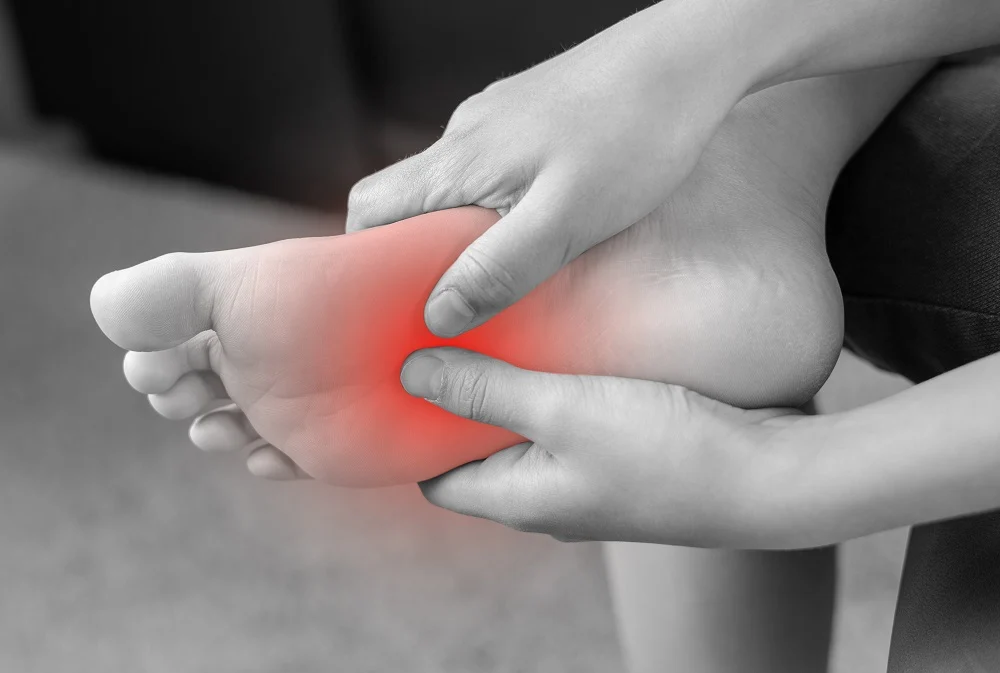Forefoot pain has a way of stealing attention with every single step. For many, metatarsalgia starts as a nagging ache beneath the ball of the foot and spirals into sharp, burning discomfort that limits training, work, and even casual walks. The good news: modern prosthetic support, think precision orthoses, carbon insoles, targeted pads, and rocker footwear, can offload the right areas, restore healthy mechanics, and calm irritation fast. This guide breaks down why metatarsalgia happens and how pressure-mapping, materials science, rehab, and lifestyle choices combine to deliver lasting relief for Metatarsalgia Conditions without guesswork.
Understanding metatarsalgia and common sources of forefoot stress
Metatarsalgia is an umbrella term describing pain under the metatarsal heads, the rounded ends of the long bones connecting to the toes. It’s not one issue, but a cluster of stress-related problems that share a location. People describe a pebble-in-the-shoe sensation, burning pain, or sharp jabs while pushing off. Symptoms often spike during running, court sports, long walks, or after time in narrow or high-heeled shoes.
Common drivers include:
- Loading patterns: Excess pressure under the second to fourth metatarsal heads is typical, especially with a long second metatarsal or hallux limitus (a stiff big toe that can’t carry its share during push-off).
- Foot mechanics: Overpronation, a high rigid arch, or equinus (tight calves limiting ankle dorsiflexion) can push force forward and increase forefoot stress.
- Tissue changes: Fat pad atrophy thins the natural cushioning beneath the forefoot, increasing impact and shear. This shows up more with age or in very lean, high-mileage athletes.
- Footwear factors: Narrow toe boxes, elevated heels, and minimal cushioning concentrate pressure beneath the ball of the foot.
- Training errors: Sudden jumps in volume or speed, hill repeats, or hard surfaces amplify loading without giving tissues time to adapt.
It’s worth noting what metatarsalgia is not. Morton’s neuroma, sesamoiditis, and stress fractures sit in the differential, each with its own nuances. Neuromas tend to bring tingling or numbness between toes (often 3rd–4th), sesamoiditis pinpoints pain under the big toe, and stress fractures produce localized tenderness and swelling. A clinician can differentiate these by exam and, if needed, imaging.
Why the focus on prosthetic support? Because load management is the linchpin. Orthoses, metatarsal pads, toe props, and rocker-soled footwear reduce harmful peak pressures and spread force across a broader area. When paired with rehab and habits that promote even gait, they help the forefoot heal, and stay that way.
Pressure-mapping technology improving orthotic customization
Pedobarography, pressure-mapping of the foot either on a platform or inside the shoe, has changed how clinicians approach Metatarsalgia Conditions. Instead of guessing, they can see precise hot spots, timing of peak pressures, and the center-of-pressure (COP) path through stance.
Here’s how it helps:
- Pinpointing target zones: High-resolution heat maps highlight which metatarsal heads are overloaded and when (early, mid, or late stance). That determines whether to prioritize forefoot posting, a metatarsal dome, or a first-ray cutout.
- Dialing pad placement: Even a few millimeters matter. Pressure-mapping guides the exact location and size of a metatarsal pad or dome so it lifts the transverse arch and shifts load proximally, off the tender area.
- Tuning arch and rearfoot control: When overpronation drives forefoot overload, the map shows prolonged medial pressure. A custom shell with medial posting and a supportive arch can reduce the torque that ends up at the met heads.
- Comparing interventions in real time: Clinicians can test different orthotic elements, topcover thickness, pad density, forefoot rocker angles, and instantly see reductions in peak kilopascals under the painful region.
For athletes, in-shoe sensors during running or cutting drills add context that a static plate can’t. They capture cadence, contact time, and late-stance spikes that often correlate with symptom flares. The result is an orthosis that’s not just “custom,” but empirically validated for that individual’s movement.
Practical takeaway: When shopping for inserts or clinic-made orthoses, look for providers who use pressure-mapping and share before/after data. Many clinics mark products with a simple “View Details” prompt on their product pages, use it to compare features like posting options, pad locations, and topcover materials.
Material science updates enhancing shock absorption and comfort
Materials matter as much as geometry. The right blend cushions impact, dampens shear, and maintains shape over miles.
Standout options:
- EVA by durometer: Ethylene-vinyl acetate remains a staple for midsoles and orthotic shells. Softer durometers (low Asker C) absorb shock: firmer blends add stability and resist bottoming out. Layering soft topcovers over firmer bases balances comfort and control.
- Urethane foams (Poron-type): Highly resilient, slow-rebound foams excel at attenuating peak pressures under the met heads without packing down quickly.
- Viscoelastic gels: Great for focal offloading when placed proximal to the painful area: best used as inserts within a structured device rather than alone.
- Carbon fiber and composite leaf-springs: Ultra-thin plates stiffen the forefoot and limit painful dorsiflexion at the metatarsophalangeal joints, which can be a relief in cases with hallux limitus or diffuse forefoot overload. Combined with rocker shoes, they substantially reduce met head bending moments.
- 3D-printed lattices: Tunable cushioning zones allow designers to create a softer central forefoot with firmer perimeter support, useful when a single met head takes most of the beating.
- Low-friction topcovers: PTFE-blend or microfiber topcovers mitigate shear (that sideways rubbing that aggravates inflamed tissue), while moisture-wicking linings cut blister risk.
Durability and feel are both critical. A plush foam that packs out in weeks is a short-term win but long-term loss. Smart builds often use a tri-layer stack: shear-reducing topcover, resilient urethane or TPU-based cushioning, and a supportive shell (polypropylene, TPU, or carbon composite). For those with fat pad atrophy, adding a mild metatarsal dome and a forefoot crash pad can restore lost cushioning without creating instability.
Bottom line: pair structure with softness. A device that simply feels pillowy may still allow harmful motion: a rigid plate without cushioning can irritate sensitive tissue. The sweet spot is a supportive chassis with targeted, durable shock absorption where it counts.
Rehabilitation techniques promoting even gait and joint alignment
Orthoses do the heavy lifting on load management, but rehab makes the change stick. The goal is even gait, adequate ankle motion, and strong, coordinated foot muscles.
Foundational moves:
- Calf flexibility: Daily calf stretching (knee straight and bent) restores ankle dorsiflexion. Limited dorsiflexion pushes the body to roll off the forefoot early and hard.
- Intrinsic foot strength: Short-foot exercise, towel curls, and “toe yoga” (isolating big toe up with others down, then reversing) help lift the transverse arch and share load across met heads.
- Peroneal and posterior tibialis training: Side steps with bands, resisted inversion/eversion, and single-leg balance drills improve dynamic control that prevents late-stance collapse.
Gait and movement tweaks:
- Cadence bump: Runners who increase cadence 5–10% typically reduce peak vertical loading rates and forefoot impact per step.
- Midfoot strike neutrality: Avoid aggressive forefoot striking during flare-ups. A transitional gait or a mild heel-to-midfoot contact reduces metatarsal stress while healing.
- Rocker strategies: Rocker-soled shoes and carbon plates shift the pivot point forward, decreasing met head dorsiflexion torque. They’re especially helpful when walking long distances.
- Taping and toe props: A low-dye variation with a metatarsal offload or a silicone toe prop can spread the toes, lift the transverse arch, and reduce neural irritation between rays.
Manual therapy can help stubborn stiffness, think first MTP mobilizations for hallux limitus or soft-tissue work along the flexor hallucis longus. For return to running, a 3:1 walk-run progression (e.g., 3 minutes walk/1 minute run, gradually flipping the ratio) allows tissues to adapt while the orthosis and shoe do their offloading job.
They shouldn’t push through the sharp, focal pain under a met head. Mild, diffuse soreness that settles within 24 hours is okay: localized pain that hangs around or worsens is a cue to dial back and re-check load distribution.


